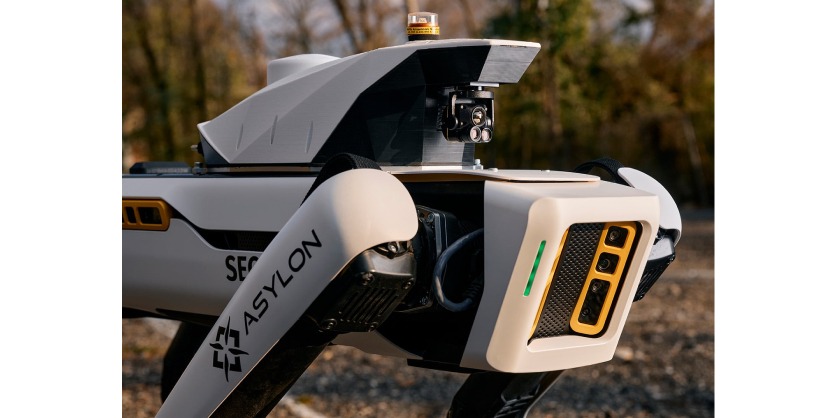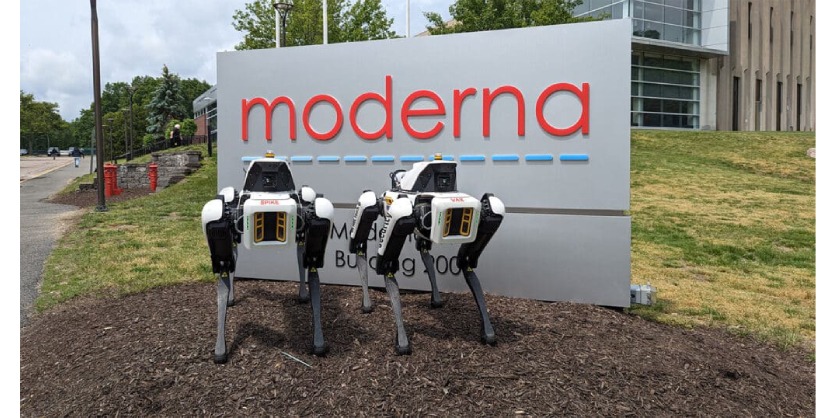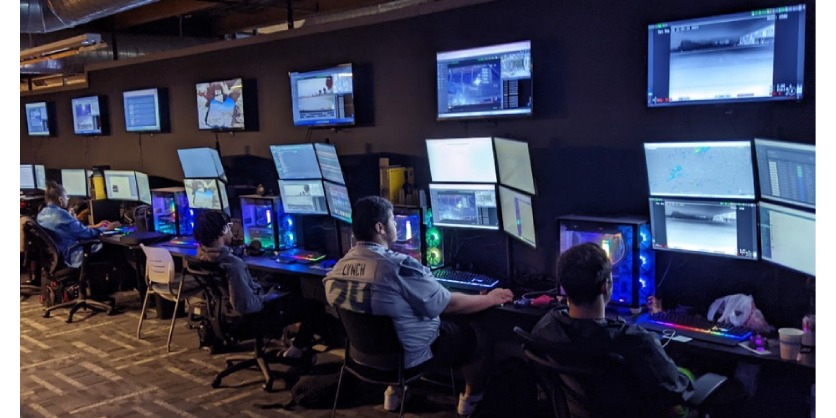Intro to Robotic Perimeter Security
July 31, 2024

Distribution centres, manufacturing plants, corporate campuses, and other facilities are turning to robotics to support their perimeter security operations.
This article was written by Ryan Hodgens, application expert at Asylon Robotics. Asylon is an American manufacturer and service provider for security drones and robotics.
Mobile robots like Spot are starting to become more commonplace, automating industrial inspections in factories and helping emergency responders safely assess hazardous scenarios from a distance. However, there are also thousands of distribution centers, manufacturing plants, corporate campuses, and other high-value facilities that are in need of cost-efficient and effective security solutions.
Security has become an increasing focus and concern across industries over the last several years. For example, incidents of cargo theft have been rising consistently over the last several years, increasing 15% year-over-year in 2022. Moreover, security jobs can be some of the most dangerous, with security guards facing some of the highest risks for both workplace homicides and non-fatal workplace violence of any profession. Drones and robots can be incredibly useful technology to augment efficiency and effectiveness while minimizing risks for security professionals.
What is Robotic Perimeter Security?
Robotic perimeter security is the process of securing a facility perimeter with aerial drones or ground robots to safeguard people, places, and property. Because site security is so critical to employee safety and business operations, it requires constant vigilance. Robots can help add necessary coverage without further taxing on site personnel. Typical customer goals when deploying robotic security solutions is to increase site security, employee safety, and operational efficiencies.
Before continuing on, it’s important to recognize that perimeter security is an exceptionally demanding use for robots and drones. In addition to requiring a higher threshold of patrol consistency and reliability to perform the regular site checks, these sites often require navigating over curbs, unstructured terrain, and in dynamic environments. Despite the demanding nature that can come with leveraging robots for perimeter security, there is a major need.
Safe and secure places for people and property should be the standard. Yet, they’re often taken for granted and require diligent work. With nationwide staffing shortages, extremely high annual turnover rates, and significant workplace risks to officers, a full-service solution with agile, mobile robots like Spot is key to achieving safety and security standards at scale.
Additionally, while AI and robotics are useful to automate routine rounds, effective security programs require reacting to emerging situations with intelligence, critical thinking, and empathy. People can and should be in the loop; remote monitors and on-site staff can work collaboratively and both be a core part of robotic perimeter security. This blend of human expertise with advanced robotics and AI is not only a core enabler of the technology today but also creates significant upskilling opportunities.

Primary Applications of Security Robotics
There are three primary applications for security robots:
- Routine tour: During day-to-day operations, robots can check all aspects of the perimeter to ensure that doors are shut, gates are closed, and locks are secure, as well as performing additional site-specific inspection tasks to verify that there are no visible safety or security risks. These checks should be conducted frequently but on a slightly variable schedule to ensure that the site is regularly inspected and the robot’s patrol schedule remains relatively unpredictable.
- Integrated alarm response: Many sites have legacy security systems already installed, or they’re evaluating connected technologies to further increase security. Through cloud-based software, robots with a human-in-the-loop can remotely respond in either a pre-programmed or direct teleoperation fashion to integrated alarms from other security systems like electric fences, AI-based weapons detection, intrusion detection systems, mobile surveillance units, access control panels, and more. Often, these alerts can be false alarms and robots can efficiently provide the verification layer. However, in instances where there is an escalated or potentially dangerous security issue, deploying a robot first can help keep a security officer out of harm’s way.
- Ad hoc mission: Security is dynamic and new situations often present themselves. Regardless of the reason, mobile robots can be deployed from a remote command center for real-time information gathering at any time.
Each of these applications serves a specific purpose. To accomplish each of these, reliability, availability, and remote operability are required due to the demanding nature and often high stakes involved with perimeter security.
Benefits of Security Robotics
Robotic perimeter security is an effective addition in many organizations’ security infrastructure, driving consistency and transparency while also extending the reach of other security tools and staff. The benefits can include:
- Enhanced security: Continuous and consistent patrolling helps in maintaining high security standards without the lapses that can occur due to human fatigue.
- Cost-effectiveness: Though a hybrid model that combines human expertise and advanced robotics, site cost and operational efficiencies can be significantly improved.
- Scalability and flexibility: Robots can easily be deployed or reconfigured to different sites based on changing security needs.
- Staffing reliability: Robots are easy to plug into hard-to-staff shifts like overnights, weekends, or holidays.
- Safety: Robots can enter potentially dangerous situations without the safety or liability risk associated with sending personnel.
- Quality assurance: With robots, there’s no second-guessing as to whether a mission was completed. All video and telemetry data is securely stored and accessible in the cloud, complete with advanced reporting and trend analysis.

Operationalizing Robots at Scale
With more than 70,000 miles patrolled at customer sites to date, Spot robots are actively operating for customers like Moderna, GXO Logistics, and Mercedes-Benz Stadium. At the Mercedes-Benz Stadium in Atlanta, for example, the robot works alongside the security team by patrolling the graveyard shift in an area of the stadium complex that’s open to the public.
The live video stream is monitored remotely and site activity is reported in real-time for consistent patrolling and enhanced employee safety. Greg Overstreet, the senior director of stadium security for Mercedes-Benz Stadium, has stated, “Since the implementation of DroneDog in our Home Depot Backyard, not only have we seen occurrences of theft and vandalism drop to zero but we have also increased safety for our employees.” From our experience, companies using this technology today are seeing a decrease in theft and vandalism, while also experiencing an increase in operational efficiencies.
To operationalize robots at scale, we’ve found that the best approach for our customers is to adopt a full-service model. This full-service combination of robots, people, and software has led to the successful completion of more than 100,000 security missions with the Spot robot, demonstrating an exponential growth trend as we operate 24/7 for an increasing number of customers.
By managing the program in this way, we’ve experienced a greater flexibility in service and support as well. In cases where a deployed robotic asset requires maintenance, the Asylon operations team will promptly ship a replacement robot from our larger fleet to the site and it will be met by a field technician to resume operations as quickly as possible. This approach helps ensure the highest possible uptime for the program, which is critical for effective perimeter security.
More Information
To learn more, see how Asylon completed 100,000 missions with Spot.
Related Story
Spot at Ontario Power Generation
There are an estimated 30,000 instances of arc flash each year in the United States alone, and one to two fatalities occur daily in North America. Ontario Power Generation (OPG) has five Boston Dynamics’ Spot robots deployed throughout their Enterprise Innovation division.
In 2022, the team sought to see if Spot’s dexterous arm could be used to assist in tripping and racking out a 600 volt breaker—an activity that is high risk for arc flash. Now, Boston Dynamics engineers have taken this application to the next level by fully automating the procedure.
Spot can perform the entire operation autonomously, with a human issuing high level commands safely out of harm’s way.


